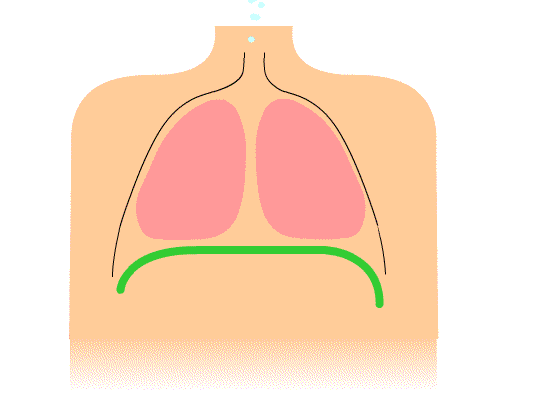Note that your final mark will not be saved in the system.
1.1.b. Respiratory system Typeit
Type the correct answers into the spaces. Fill all the spaces before clicking ‘Check Answers!’

The respiratory system's relationship with the cardiovascular system is depicted by the double-circulatory system. During systole in the cardiac cycle, deoxygenated blood is carried to the capillaries surrounding the in the lungs for gaseous exchange to occur, whereby the newly oxygenated blood is transported back to the heart before it is ejected around the body. Similar to the cardiovascular system, where there are three key values that reflect the intensity at which the body is working, there are also three key values that reflect this relationship in the respiratory system. These are:
- Breathing frequency – the number of breaths per
- Tidal volume – the volume of air inspired or expired per
- Minute – the volume of air inspired or expired per minute
The relationship between these three values can be expressed in the following equation:
Breathing frequency x =
At rest:
- Breathing is generally an unconscious effort at rest, with normal resting breathing frequencies being around 12 breaths per minute. Like heart rate, it can be influenced by a multitude of factors such as mood, acute illness, and anxiety. Another similarity to heart rate is that fitter individuals tend to have a lower breathing frequency.
- The average resting value for tidal volume is 500 ml. Just as resting stroke volume is dependent on resting heart rate, resting tidal volume is dependent on resting breathing frequency/rate. If fitter individuals have lower breathing rates, then the amount of air inhaled and exhaled per breath increases to compensate.
- Using the average resting values for breathing frequency (12 breaths) and tidal volume (500 ml), average minute ventilation at rest is calculated at L. Having a large minute ventilation aids the efficiency of oxygen transport in the blood, as a greater level of diffusion is able to occur at the site of gaseous exchange relative to the number of breaths taken.
During exercise:
We know that the demand for oxygen at working skeletal muscles increases at greater exercise intensities, and the respiratory system plays in an important role in meeting these demands. Neural and chemical factors regulate both () and depth () during exercise. Neural factors, such as an increase in of the blood and muscles, are detected by thermoreceptors, and muscle activity and lung elasticity are detected by proprioceptors and mechanoreceptors retrospectively, and this can all increase breathing frequency and depth during exercise. Chemical factors such as pH (acidity of the blood) and carbon dioxide levels in the blood are detected by and have the same effect as neural factors, both acting on the respiratory control centre in the medulla oblongata of the brain.During recovery:
Recovery of the respiratory system follows a similar pattern to that of the cardiovascular system, characterised by a marked reduction in breathing frequency, tidal volume and minute ventilation upon immediate cessation of exercise, followed by a reduction to resting levels over the course of recovery. The partial pressure of oxygen at the muscle begins to be restored, decreasing the diffusion gradient and minimising the dissociation of oxygen from haemoglobin. Chemical factors are removed from the blood and neural factors return towards homeostasis.